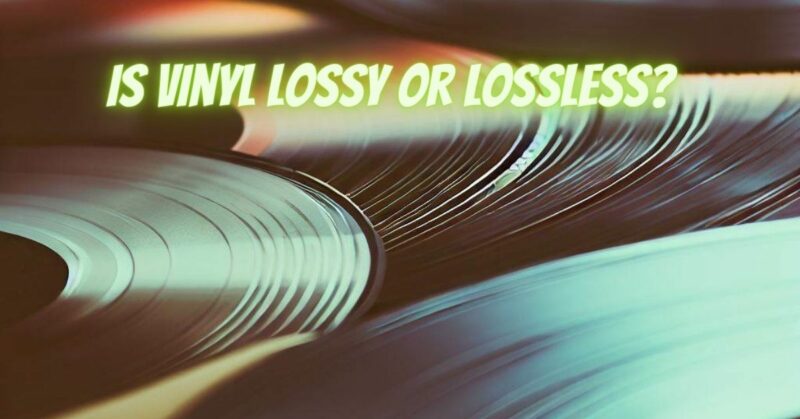The debate over the audio quality of vinyl records versus digital formats often raises questions about whether vinyl is a lossy or lossless medium. In a world where lossless digital audio formats like FLAC and WAV are celebrated for their fidelity, it’s essential to understand the unique characteristics of vinyl and how they affect the perception of audio quality. In this article, we will explore whether vinyl records can be considered lossy or lossless and shed light on the complexities of analog sound reproduction.
Defining Lossy and Lossless
Before delving into the vinyl format, let’s clarify the terms “lossy” and “lossless”:
- Lossy: Lossy audio compression methods, such as MP3 or AAC, achieve smaller file sizes by discarding some audio data that is considered less essential. While this reduces file size, it also compromises audio quality, resulting in a loss of data and, subsequently, a reduction in fidelity.
- Lossless: Lossless audio compression methods, like FLAC (Free Lossless Audio Codec) and ALAC (Apple Lossless Audio Codec), reduce file size without sacrificing audio quality. They achieve this by encoding audio data in a more efficient manner without any data loss.
Vinyl Records and Lossy vs. Lossless
Vinyl records operate in an entirely different realm from digital audio formats. Here’s why it’s challenging to categorize vinyl as strictly lossy or lossless:
- Analog Nature: Vinyl records are entirely analog. The audio signal is stored as a continuous waveform, not as discrete digital data. This inherently analog nature means that vinyl does not employ compression methods that result in data loss, as seen in lossy digital formats.
- Limitations and Imperfections: Vinyl records have physical limitations and imperfections, such as surface noise, crackles, and pops. These are artifacts of the analog medium itself and are not introduced as part of a lossy compression process. Instead, they are a natural part of the vinyl experience.
- Signal Degradation Over Time: Vinyl records can degrade over time due to factors like wear, scratches, and dust. While this can affect playback quality, it is not a lossy compression process but rather the result of physical deterioration.
- Subjective Sound Characteristics: Vinyl records are often celebrated for their warm, rich sound, which is influenced by analog playback and the unique characteristics of the format. These subjective sound qualities, often described as “analog warmth,” contribute to vinyl’s appeal.
Vinyl records defy easy classification as either lossy or lossless because they exist outside the realm of digital audio compression. Instead, they are an analog medium with its unique characteristics and imperfections. Vinyl records capture and reproduce audio as continuous waveforms, and any perceived “loss” in audio quality is typically attributed to the physical limitations and characteristics of the format.
While vinyl may not offer the technical precision associated with lossless digital formats, it provides a different and often highly sought-after listening experience—one that is celebrated for its analog warmth, tactile engagement, and emotional connection to the music. In the end, the choice between vinyl and digital formats often comes down to personal preference, with each offering a unique perspective on the art of sound reproduction.

